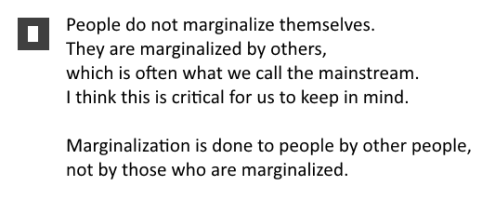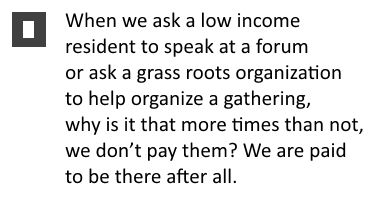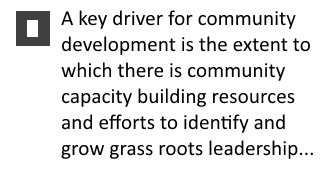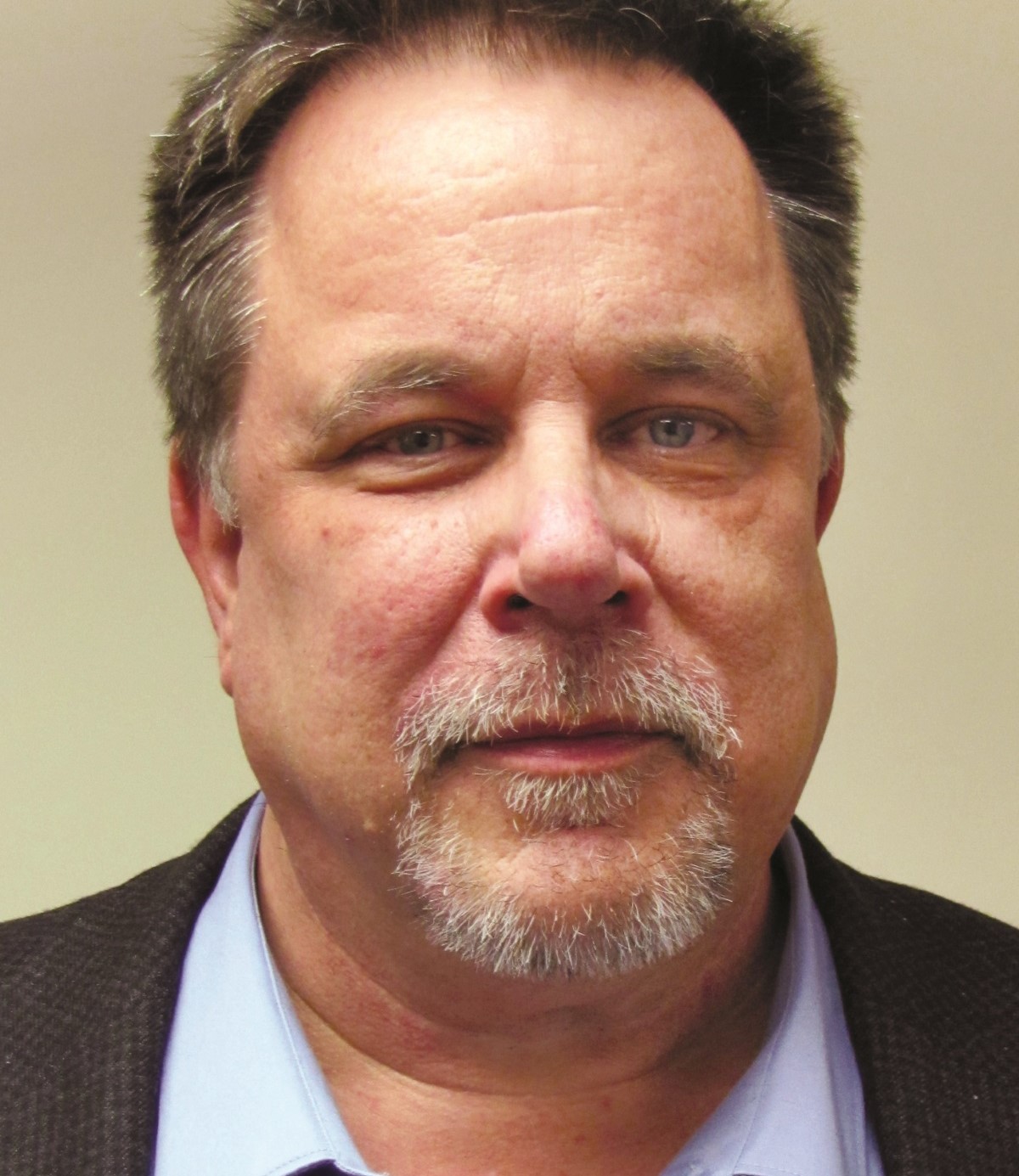I have been preparing for the community engagement learning event Tamarack is doing in Ottawa this week, called Community Engagement: The Next Generation. One of the workshops I wanted to do was on engagement of marginalized populations, in particular those living in poverty. My exploration of this topic led me to some provocative writing by Vu Le, who is a writer, speaker, and executive director of Rainier Valley Corps, a capacity building organization with a focus on leveling the playing field for people of colour as well as small, grass roots organizations.
I was particularly drawn to a piece he wrote on his blog about “Trickle-Down Community Engagement,” and his writing became the catalyst for one of the workshops I am doing, aptly called “Avoiding Trickle-Down Community Engagement of the Marginalized.”
With minor paraphrasing here is what Vu Le wrote:
Trickle-Down Community Engagement is when professionals bypass the people who are most affected by issues and instead engage and fund large organizations and systems to tackle these issues, and hope that miraculously the people most affected will help out in the effort, usually for free and on our timelines, within our rules of engagement and end up grateful for our largesse.
It's hard-hitting criticism but also too often the truth. I encourage you to read his postings on the topic. I did some thinking on the topic and I asked myself what causes trickle-down community engagement; why does it happen? I reflected on my own varied experiences of engaging people who are poor, homeless, and further marginalized by an illness or disability, lack of education, or by racism.

Here are some of the reasons I came up with:
We narrow our conversations about poverty to meet our institutional needs
As organizations, we often focus on poverty in terms of how it affects us, in particular our organizations and our work on the ground. Our required loyalty to our mission and vision can have the undesirable effect of a containment of poverty and related challenges to that which fits what we are doing. In other words, our mission and vision creates a kind of closed system and a bias in terms of how we see people who are poor, see impoverished neighbourhoods, and how we see possible solutions.
Such a bias often ends up with our community engagement of the marginalized being about us, not them. They become the means by which we can better refine what we are doing (again within our mission and vision) rather than being open to discoveries of perspectives, ideas, and insights from the engaged that points to other things we should be paying attention to.
We still see poverty as the manifestation of personal flaws
Hard as it might be for many of us to admit, it is also the case, too often, that we still see poverty as a personal flaw, as being primarily, if not solely, the result of bad choices rather than rooted in circumstances that have caused harm and suffering to people. For example, a female client who has a grade eight education, is addicted to alcohol, and lives with a man who beats her will be judged for being pregnant. How could she let that happen, given her drinking and the violence? Or what on earth is wrong with her for living with such a man? Doesn’t she know she has to stop drinking now?

Stuff like that. Of course, as helping professionals we understand cause and effect; we understand that circumstances set courses of action in motion that lead to pain and despair. Still, our judgements sneak through more than they should. It’s not that we do so maliciously, but the idea that people should be totally responsible for their actions is engrained in us. It’s a black and white thing, right?
The truth is that traumatized people often end up in terrible circumstances and within those circumstances also make bad decisions. Just dealing with her “decision-making” skills is not only wrong and unhelpful, it is degrading.
Marginalized people can’t be leaders out of their situation
The bias that people living in poverty are flawed personally also moves us see them as being incapable of leading and/or being full participants in their own journey out of their current reality. Because their lives are so screwed up, and because of their perceived complicity getting to the state they are in, we just default to professionals and institutions as being those best suited to find and deliver solutions. After all we have the education and the experience. We know systems (or so we think we do), and we have networks that help us do our jobs, regardless of whether or not we are doing the right jobs.
Funders value large institutions more than grass roots groups
Small, citizen-led organizations more often than not have no funding other than the nickels and dimes they are able to muster on their own. While there is some change going on here with funders, the prevailing practice still seems to be to value big over small, professionals over lay people, and big impact story agencies over impacts that are strictly local. Grassroots organizations lack “our” sophistication, lack “our” networks, and can be perceived as being made up of dysfunctional people. Their chances of getting funding are stymied in all kinds of ways. Many lack charitable status or any formal status at all. They are told by funders that they do not have the capacity and skill to do what they are proposing, but funding for capacity building is rarely offered.
 As well, the growing movement toward collective impact or large-scale collaborative efforts can be a huge problem for grass roots groups. As funders shift priorities to such big efforts, the pool of money they have for smaller, niche efforts decline. And imagine the challenges of a small, grass roots organization trying to play in the same collective impact field of the big institutions. Not only do they lack the resources to join in, what status would they have in such a crowd?
As well, the growing movement toward collective impact or large-scale collaborative efforts can be a huge problem for grass roots groups. As funders shift priorities to such big efforts, the pool of money they have for smaller, niche efforts decline. And imagine the challenges of a small, grass roots organization trying to play in the same collective impact field of the big institutions. Not only do they lack the resources to join in, what status would they have in such a crowd?
A while back I had a conversation with a funder in the United States. That funder had decided to direct all its money to collective impact initiatives and to do so they were defunding all of their agencies. While large organizations typically have a strong revenue mix and can survive one funder’s dissipation of funding, smaller organizations will not fare so well and I have a feeling many will become broken if not lost to us.
Seeing the marginalized as a homogeneous group
Another crazy habit professionals have is that tend to see people who are poor or otherwise marginalized as a homogeneous group. We group them into a perception field fed by data about their demographics, education, income, and so on. If lack of high school is a major issue/problem in the community and those we are targeting for engagement have a high incidence of not graduating, do we conclude that they are all of similar intelligence? How often do we tell one another we need someone with lived experience at the table? Maybe even two of them. That way, we will have the poor represented, right?
We ask the marginalized to participate and contribute without compensation
Engagement efforts can, by design, exclude those targeted from participating. When we ask a low income resident to speak at a forum or ask a grass roots organization to help organize a gathering, why is it that more times than not, we don’t pay them? We are paid to be there after all. By paying them I don’t mean giving a low income speaker a $25 gift card to a grocery store. First, their contribution should be honoured financially in a real way, not be a token. Second, we tend to give gift cards so that, you know, the poor person won’t spend the cash on booze or something that shouldn’t be her priority. It’s demeaning. Ask yourself if you want to be participate in a gathering that held you in such light?
We often pay insufficient attention to logistical considerations
Other reasons why our designs encourage lack of engagement is that we give short shrift sometimes to locating gatherings near public transportation and fail to fund the trips. Not every person living in poverty has a bus pass. Often gatherings are planned at hours of the day low income workers can’t attend. In other words, we want them to participate within our work day. And child care: its absence will mean some parents can’t come, can’t participate.
We tend to see problems having technical solutions
There are other challenges we create to community engagement. For example, as Vu Le indicates, we see adaptive challenges as technical problems requiring formula solutions that fit our logic models, our plans, our resources.
This tendency to invoke technical solutions is a major reason why the majority of resources are spent on managing the marginalization of people. I know that is not how most would put it. Typically we say we have to stop managing poverty and solve it. I agree! But even that statement has one important thing missing: people.
People do not marginalize themselves. They are marginalized by others, which is often what we call the mainstream. I think this is critical for us to keep in mind. Marginalization is done to people by other people, not by those who are marginalized.
This suggests to me that our focus on food banks and programs that help people cope with being disadvantaged is really about managing the actual disenfranchisement of people. It’s not that we shouldn’t have food banks; when people are hungry we should feed them. But when all there is are food banks; well that’s another matter altogether.
We are compelled to control the engagement
Most often the nature of community engagement is about what an institution is thinking of doing or its need for more information and “input” from its clients or target population. This is not wrong, but it is limiting when it comes to the full engagement of others. Our focus means we create and maintain control on how things go, what questions get asked, how much time is spent on this or that, and so on. Either there is no space for the “tangents” participants might come up with or they are addressed as “parking lot” items.
Getting to the core of engagement: having conversations with people
We need more community engagement that are about community conversations. People talking with one another, seeking to understand, and moving through whatever hubris might be in the way toward a place of working together to generate possibilities and strategies. The best engagement happens on shared ground, with an acceptance of one another for all we are and what we bring to the table as our offering.
All of us are flawed and all of us have the same need for self-expression, for being heard and taken seriously. We can’t claim community engagement if all we do is have a community meeting, or send out a survey, or hold a few focus groups. Those activities may be consultative but they are power-based consultations that allow others influence on our terms and only if we decide to be influenced.
To end poverty or homelessness or to turn racism away will happen because of changes in community. Professionals can contribute much but we won’t pull it off. Governments won’t either. And not the private sector. And it can’t just be the three sectors collaborating well; it will take the people as well – those who marginalize and those who are place on the margins.
Toward an emphasis on community development
This is the call for community development in its many forms. People working to improve their neighbourhoods, towns, cities, and on. A key driver for community development is the extent to which there is community capacity building resources and efforts to identify and grow grass roots leadership, to not only share our skills but teach them in community while we are taught by those we are engaged with.

Funders and helping institutions need to loosen their grip on service outcomes as their guide and invest good money in community capacity building for its own sake as well as to address community issues and of course opportunities.
I am as guilty of poor community engagement as the next guy or gal, so please don’t assume any “holier than thou” attitude here. I have done some pretty bad community engagement, especially around building social housing. I’d like to think I learned from those mistakes, but also from those times I have done a fairly good job of it.
Remembering the Operation Friendship story
Back when I was the Executive Director of Operation Friendship, we had received funding to build a major multi-purpose centre in the inner city. The community consultation on the project took place before I arrived, but I was given some “design elements” that participants of community meetings identified as important to them.
Two of them stood out. They wanted open space on our property for our clients (mostly homeless, addicted, and transient men) to hang out; that way they wouldn’t be on the front steps of the neighbours. And they wanted our roof lines to be no higher than the other houses on the block. In other words, they didn’t want our institution to look like one, towering above everything else. They wanted us to fit into the community and as I read the notes it became clear as well that they wanted what we built to look residential, not like offices
The short story is we pulled that off, as indicated below in the photograph.

Our drop in centre was set back and in the middle of our complex. On each side, in two houses, were where our staff had their offices. And rising up on either side of the drop-in centre and wrapping around behind it was a two storey rooming house for 40 hard-to-house seniors. You can barely see it from the street.
The spirit of engagement was also evident in our inclusion of the seniors in the design of the rooming house and other spaces. Given their age, they had grown up with porches so they told us in no uncertain terms that the houses for our staff had to include porches, which ended up being wrap-around verandas. They also wanted benches in the courtyard, which they got. As much as possible they wanted to be outside.
During the design phase of the rooming house, we teamed up with the architect to hold a “design session” in the old drop in centre. We gathered dozens and dozens of magazines and put post-it notes and markers and other crafty things on tables and asked the seniors to make a collage of what a home meant to them. It took a little prodding to get them started but once they did, they produced some very telling images and had some fun in the process.
We learned from the images that safety of person as well as of their food was paramount. They didn’t want to be beaten up or have their food stolen. Other images spoke of the importance of social interaction; they were full of people. One poster board had a huge lock in the image and we learned that many of our tenants had a strong need for strong locks on the door.
When construction began, we went to the drop in and asked if anyone there had engineering experience. Three raised their hands and one said yes to being the in-house inspector of construction. He went to all the meetings and he participated and demonstrated he knew his stuff. He caught a few things that needed fixing as well. After each meeting he shared his “report” with whoever was there. Not everyone listened, but he didn’t care. He just focused on telling those who wanted to know.
All of that was, I suggest, pretty decent engagement. It happened because we wanted to make sure we did what we could for people who for most their lives never had a say in such things. We risked being creative. After all do drunk old men really want to make collages? And we made sure they were kept informed and the staff engaged the construction folks, the funding bureaucrats, and the architects and engineers with a fierce commitment to get what the seniors identified as important. We didn’t win every battle, but we won a lot more than we lost.
Maybe there is a metaphor here. Maybe community engagement is about wins and losses sometimes. And maybe to gain ground toward a better community, we have to lose some ground too. And often losing ground also means losing status and power. That’s something professionals have a hard time doing and it is also the very thing we should be striving to do.





